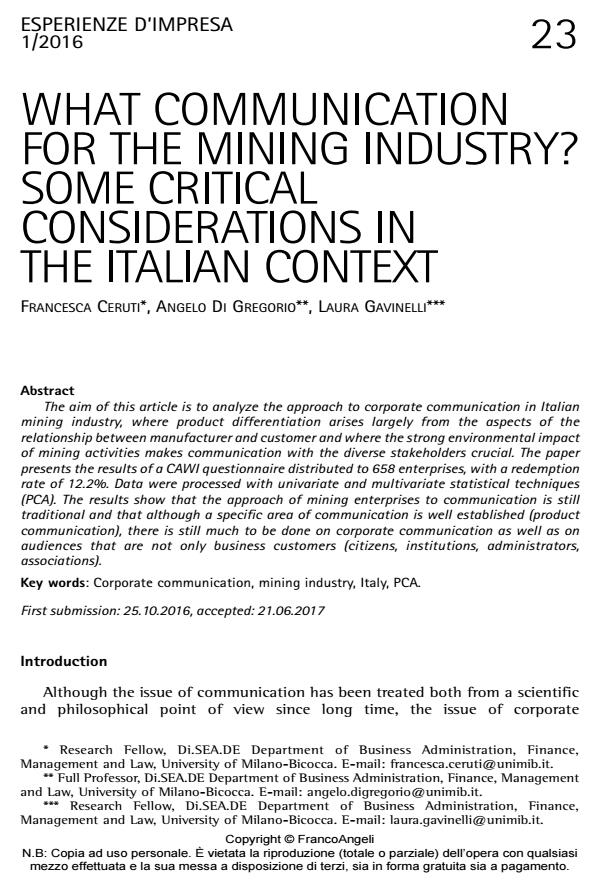What communication for the mining industry? Some critical considerations in the italian context
Journal title ESPERIENZE D'IMPRESA
Author/s Francesca Ceruti, Angelo Di Gregorio, Laura Gavinelli
Publishing Year 2018 Issue 2016/1
Language English Pages 18 P. 23-40 File size 211 KB
DOI 10.3280/EI2016-001002
DOI is like a bar code for intellectual property: to have more infomation
click here
Below, you can see the article first page
If you want to buy this article in PDF format, you can do it, following the instructions to buy download credits

FrancoAngeli is member of Publishers International Linking Association, Inc (PILA), a not-for-profit association which run the CrossRef service enabling links to and from online scholarly content.
The aim of this article is to analyze the approach to corporate communication in Italian mining industry, where product differentiation arises largely from the aspects of the relationship between manufacturer and customer and where the strong environmental impact of mining activities makes communication with the diverse stakeholders crucial. The paper presents the results of a CAWI questionnaire distributed to 658 enterprises, with a redemption rate of 12.2%. Data were processed with univariate and multivariate statistical techniques (PCA). The results show that the approach of mining enterprises to communication is still traditional and that although a specific area of communication is well established (product communication), there is still much to be done on corporate communication as well as on audiences that are not only business customers (citizens, institutions, administrators, associations).
Keywords: Corporate communication, mining industry, Italy, PCA.
Francesca Ceruti, Angelo Di Gregorio, Laura Gavinelli, What communication for the mining industry? Some critical considerations in the italian context in "ESPERIENZE D'IMPRESA" 1/2016, pp 23-40, DOI: 10.3280/EI2016-001002